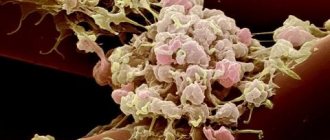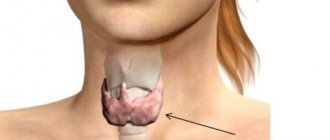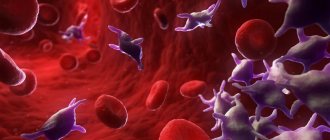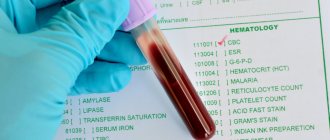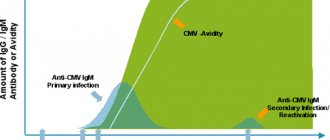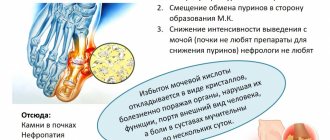Causes of appearance in the blood
C reactive protein is produced in liver cells. It consists of carbohydrates and proteins. In the blood of a healthy person, the amount of the substance is minimal, so it is impossible to detect it even with the help of high-precision methods and modern equipment. Increased production of CRP begins only with the development of pathologies that pose a threat to the human body. They can be provoked by a variety of harmful microorganisms: bacteria, viruses, fungi.
CRP appears in increased quantities in the blood during injuries and surgical operations, damage to internal organs and the development of tumors. Also, CRP analysis shows the presence of a substance in the blood during autoimmune reactions of the body, which lead to impaired immunity. In this case, substances are produced that damage healthy tissue.
When C reactive protein in the blood is elevated, this indicates the activation of the natural defense systems of the human body. But at the same time, the substance at high concentrations has a negative effect on fat metabolism, which increases the risk of cholesterol plaques on the walls of blood vessels. That is, if the presence of CRP is confirmed, the likelihood of vascular complications can be assessed by its concentration.
C-reactive protein and ESR
ESR or Birnatsky reaction is a measurement of the erythrocyte sedimentation rate in a test tube with blood. It is expressed in millimeters per hour. ESR is an indirect indicator of the inflammatory response. However, the ESR test is less specific than CRP.
In addition to inflammation, an increase in ESR is also affected by:
- Obesity. Adipose tissue is a source of interleukin 6. This is one of the proteins involved in the formation of inflammation.
- Kidney failure. In end-stage renal failure and in the case of nephrotic syndrome, patients have significantly increased ESR values.
- Hemoglobin concentration. Anemia speeds up the decline of red blood cells.
- Shape of red blood cells. Determination of ESR is unreliable in diseases with abnormal red blood cells, such as sickle cell disease.
If there is a disproportion between CRP concentration and ESR, the first step is to consider the possibility of a false measurement due to the above factors or laboratory error, such as taking too long from collection to delivery to the laboratory or storing the tube in inappropriate conditions.
CRP levels respond more dynamically to increased inflammation than ESR. In the case of, for example, lupus erythematosus, the ESR value may be elevated when the level of CRP in the blood is low. This is caused by high levels of type 1 interferon, which suppresses the liver's production of CRP.
Standard indicators
C reactive protein, the norm of which is universal for all categories of people, makes it possible to detect inflammatory processes in the human body. But it is impossible to make a diagnosis solely on the basis of a CRP blood test.
Today it is believed that the SRP norm is up to 5 mg/l. In newborns, the level can increase to 15 mg/l. When C reactive protein is elevated, suspicions arise about the development of an inflammatory or malignant process. This means that more accurate diagnostics using other methods is required.
But since the use of high-precision equipment makes it possible to determine the minimum amount of a substance in the blood, experts have begun to apply the concept of the basic value of CRP. It was introduced to assess the risks of damage to the heart and blood vessels, in cases where the development of any inflammatory processes is excluded. The norm for the basic indicator of the substance is less than 1 mg/l.
Effect of drugs on CRP concentration
Taking acetylsalicylic acid or aspirin, even in high doses, does not affect the quantitative level of CRP. This is somewhat surprising since aspirin is known for its anti-inflammatory properties.
Patients with high cholesterol who take statins are less likely to have a heart attack because statins not only lower lipid levels but also have anti-inflammatory properties. This is very important because high CRP and low cholesterol are more dangerous than high cholesterol and low CRP. The level of CRP is also reduced by drugs from the group of fibrates and beta-blockers, but less effectively than by statins.
Reasons for the increase
When C reactive protein is elevated, there may be different reasons. Today they are divided into three main groups:
- Oncology.
- Inflammatory processes.
- Vascular pathologies.
The risks of developing certain diseases are assessed by the concentration of the substance in the blood:
- Less than 19 mg/l. This deviation is considered insignificant. Exceeding the norm can be triggered by any negative factor affecting the body. As a rule, in this case, analysis is required at a certain frequency. If constantly elevated CRP is detected, diagnostics are required to exclude autoimmune and oncological pathologies.
- 20-50 mg/l. Indicators always rise to this level with various viral infections.
- More than 100 mg/l. A bacterial infection can provoke a strong immune reaction in the body, against which serious diseases develop: pneumonia, salmonellosis, pyelonephritis, etc.
Stages
Any form of arthritis has serious complications, so you should not delay treatment.
See how easily the disease can be cured in 10-12 sessions.
There are 4 clinical stages of the development of rheumatoid arthritis in women:
- Initial
– lasts for 6 months, the first signs are somewhat erased, but remain constant; sometimes there is an acute onset; - Early
– the development of pathology in the first year of the disease, the symptoms appear clearly. - Expanded
– the first two years of the disease, the signs are bright, the course is progressive, possible impairment of joint mobility. - Neglected
– more than two years, symptoms of joint deformation and persistent impairment of limb function appear, which becomes a cause of disability.
From stage to stage, there is a clear tendency for arthritis to progress in the absence of treatment. Therefore, it is very important to promptly identify the symptoms of rheumatoid arthritis in women and immediately begin treatment.
Complexes with this research
Women's check-up No. 1 38 studies for annual preventive examination 19,290 ₽ Composition
Male anti-aging diagnostics Monitoring of key indicators in men aged 40+ 13,300 ₽ Composition
Preventive check-up Universal annual preventive screening 6,300 ₽ Composition
IN OTHER COMPLEXES
- Advanced anti-aging diagnostics in postmenopause RUB 29,230
- Advanced male anti-aging diagnostics RUB 33,710
- Inflammation of joints 860 ₽
- Anti-aging diagnostics in postmenopause RUB 12,630
- For those at risk of COVID-19 RUB 4,510
Treatment of rheumatoid arthritis in women in our clinic
Treatment of rheumatoid arthritis in women in the clinic
At the Moscow clinic “Paramita” they approach the treatment of female forms of rheumatoid arthritis with special care. To do this, a comprehensive examination of the patient is carried out, identifying hormonal disorders and concomitant diseases that contribute to the development and maintenance of the autoimmune inflammatory process. Correction of these disorders is necessarily part of the complex therapy of a woman suffering from rheumatoid arthritis.
We combine proven techniques of the East and innovative methods of Western medicine.
Read more about our unique method of treating arthritis
The doctors of our clinic have at their disposal a wide range of the latest European and traditional oriental healing methods. In our practice we use:
- drug therapy, combining the administration of the most effective modern drugs, medicinal herbs and homeopathic remedies; this allows you to quickly relieve pain and significantly reduce the drug load on the patient’s body;
- physiotherapeutic procedures - their skillful combination with drug therapy according to modern regimens leads to a rapid improvement in a woman’s condition;
- kinesitherapy, taping, exercise therapy and massage courses are selected strictly individually, preventing the development of ankylosis and joint deformities;
- PRP therapy is a unique modern method of stimulating the regenerative abilities of tissues by introducing the patient’s own platelets, processed using a special technique;
- reflexology (RT) - influence on acupuncture points (AP) on the human body, reflexively connected with various organs and systems; our specialists have been trained in RT in China and Tibet, they are proficient in all methods of RT - acupuncture, cauterization with wormwood cigarettes, acupressure, etc.; in skillful hands, the effectiveness of RT can be equal to the effectiveness of drug therapy;
- pharmacopuncture – introduction of modern medicines into AT; one of the most effective ways to treat RA.
This approach to the treatment of rheumatoid arthritis in women allows patients to constantly be in a state of remission. They regularly undergo courses of maintenance therapy in our clinic, lead an active lifestyle, forgetting about painful exacerbations and the prospect of disability.
Indications
A blood test for CRP is prescribed for children when:
- suspected infectious or inflammatory disease;
- carrying out antibacterial therapy and monitoring its effectiveness;
- there is a risk of developing cardiovascular pathologies;
- recovery and complications in the postoperative period;
- transplant operations and complications such as rejection;
- autoimmune pathologies;
- control and treatment of chronic inflammatory conditions.
How to achieve lasting remission
In order to forget about exacerbations of rheumatoid arthritis, you need to:
- Healthy food;
- move more, do exercise therapy, swim, walk;
- get rid of stress, overload at work and at home, heavy physical work;
- no smoking;
- promptly identify and treat hormonal disorders;
- regularly carry out courses of maintenance treatment prescribed by your doctor.
Rheumatoid arthritis in women is treated at any stage. The specialists of the Moscow Paramita clinic know this well.
Literature:
- Nasonov EL, Karateev DE, Balabanova RM. Rheumatoid arthritis. In the book: Rheumatology. National leadership. Ed. E. L. Nasonova, V. A. Nasonova. Moscow: GEOTAR-Media; 2008. pp. 290–331.
- Folomeeva O. M., Galushko E. A., Erdes Sh. F. Prevalence of rheumatic diseases in adult populations of Russia and the USA. Scientific and practical rheumatology. 2008;46(4):4-13. DOI:10.14412/1995-4484-2008-529.
- Leandro G, Mangia A, Hui J, et al. Relationship between steatosis, inflammation, and fibrosis in chronic hepatitis C: a meta-analysis of individual patient data. Gastroenterology 2006;130(6):1636-42.
- Rubbia-Brandt L, Quadri R, Abid K, et al. Hepatocyte steatosis is a cytopathic effect of hepatitis C virus genotype 3. J Hepatol 2000;33(1):106-15.
- Hezode C, Roudot-Thoraval F, et al. Different mechanisms of steatosis in hepatitis C virus genotypes 1 and 3 infections. J Viral Hepat 2004;11(5):455-8.
Themes
Joints, Pain, Treatment without surgery Date of publication: 04/14/2020 Date of update: 03/12/2021
Reader rating
Rating: 4.5 / 5 (4)
Functions
The synthesis of C-reactive protein is carried out by liver cells (hepatocytes) under the influence of pro-inflammatory cytokines to perform the protective functions of the body:
- binds substances (polysaccharides, nucleic acids, polyanions) located on the surface of bacteria, fungi and parasites;
- activates the work of immune system enzymes for nonspecific protection against infectious processes;
- promotes phagocytosis - the capture and destruction of foreign cells by macrophages, microphages and monocytes;
- activates the work of platelets during bleeding;
- identifies, neutralizes and removes toxic substances formed during the breakdown of its own cells.
Treatment
Treatment of rheumatoid arthritis in women
If signs of rheumatoid arthritis appear in a woman, treatment should be prescribed immediately after diagnosis, taking into account the data of the examination. Prescribed:
- a diet with sufficient animal protein and calcium - dairy products, lean meat and fish, vegetables, fruits, cereals; spicy foods and sweets are excluded;
- correct daily routine with alternating sleep and wakefulness, eliminating stress;
- drug therapy and traditional methods of treating rheumatoid arthritis in women;
- physiotherapeutic procedures, physical therapy (physical therapy), massage;
- methods of gravitational blood surgery - hemosorption, plasmapheresis;
- orthopedic correction methods;
- surgical treatment of rheumatoid arthritis in women.
References
- Kishkun, A.A. Immunological and serological studies in clinical practice. - M.: Medical Information Agency, 2006. - 536 p.
- Sarapultsev, P.A., Sarapultsev, A.P. The role of c-reactive protein in the acute phase response in myocardial infarction. Cytokines and inflammation, 2013. - T.12. - No. 4. - P. 18-24.
- Biasucci, M., Liuzzo, G., Colizzi, C. et al. Clinical use of C-reactive protein for the prognostic stratification of patients with ischemic heart disease. Italian heart journal: official journal of the Italian Federation of Cardiology, 2001. - Vol. 2(3). — P. 164-171.
- Russell, A., Cunninghame, G., Shepherd, C. et al. Polymorphism at the C-reactive protein locus influences gene expression and predisposes to systemic lupus erythematosus. Human molecular genetics, 2004. - Vol. 13(1). — P. 137-147.
- Mevorach, D., Mascarenhas, J., Gershov, D. et al. Complement-dependent clearance of apoptotic cells by human macrophages. The Journal of experimental medicine, 1998. - Vol. 188(12).
